إبحث فى المدونة والروابط التابعة
بعلزبول .. ملك العالم السفلى

نتن ياهووووووووووووووووووووووووو
هل تذكرون ايفا الكندية التى كانت تقف معنا فى رفح اثناء محاولتنا ادخال الادوية القادمة من اسكتلندا لغزة عبر معبر رفح؟
ايفا الان فى غزة دخلت مع احد سفن الكرامة التى تبحر من قبرص
ايفا شاهد عيان فهى تذهب لكل مكان – المستشفيات و الشوارع
والمقابر وتصاحب سيارات الاسعاف تصور و تسجل كل شئ
حتى ان احد المسعفين التى كانت معهم فى سيارة الاسعاف
قصفت سيارتة و استشهد
تابعوا يوميات ايفا لانها من الناس القليلة الموجودة فى غزة ويسجلون الاحداث و ينشرونها
تابعوها و انشروا موضوعاتها فى كل مكان خاصة للاجانب
فنقل متابعة ايفا هااام للغاية
احد موضوعات ايفا
After finishing a shift with the PRCS yesterday morning, we went to the Fakoura school, to see and to listen to the voices. Prayers were happening in the street in front of the school. I'd seen prayers in open, outdoor places in Palestine, in Egypt. But these days, when I see a mass of people praying, in front of Shifa hospital, in the streets of Jabliya, I think of the mosques that have been bombed, the loss of lives and sanctuaries. And yesterday I thought of the loss of a safe-haven.
The grief was very evident, as was the indignation: "Where are we supposed to stay," one man demanded. "How many deaths is enough? How many?" It's the question that has resounded in my mind since the attacks on December 27th.
Across Fakoura street from the school, about 15 metres down a drive, a gaping hole in the Deeb house revealed what had been happening when it was hit by a shell. Rounds of bread dough lay where they'd been rolled out to bake. Amal Deeb was in her thirties, a surviving family member told us. When the missile struck, it killed her and 9 others in the extended-family house, including 2 boys and 3 girls. Another 4 were injured, one having both legs amputated.
Approaching the house, the stench of blood was still strong, and became evident, in patches and pools amid the rubble of the room. Later, in Jabalilya's Kamal Adwan hospital, 19 year old Ahlam lay conscious but unsmiling, unresponsive. The woman at her side explained her injuries: shrapnel lacerations all over her body, and deeper shrapnel injuries in her stomach. Ahlam didn't know 9 of the family were killed.
Returning to the street in front of the UN Fakoura school, mourners had gathered, ready to march, to carry the dead and their pieces to their overcrowded resting place. Flags of all colours mixed in this funeral march: no one party dominated, it was collective grief under collective punishment.
So many people had joined the procession through the narrow streets that the funeral split, taking different streets, to reach the cemetery. At the entrance to the cemetery, decorated cement slabs mark the older graves, laid at a time when cement and space were available. The latest bodies, instead, show in sandy humps, buried just low enough to be covered but not properly so. Cement blocks mark some graves, leaves and vines on others. And some were just barely visible, by the raise in earth. But it was too packed, too hard to estimate where a grave might be, no possibility of a respectfully- spaced arrangement.
"Watch where you step," Mahmoud, a friend, had said, pointing to a barely-noticeable grave of a child.
The enormity of the deaths hit me. After 12 days of killing and psychological warfare, I'd become…less shocked at the sight of pieces of bodies, a little numb…like a doctor might, or a person subjected to this time and again. I was and am horrified at the on-going slaughter, at the images of children's bodies being pulled from the rubble astonished it could continue…but adapted to the fact that there would be bodies, maimed, lives ruined. Standing among sandy makeshift graves, watching men digging with their hands, others carrying corpses on any plank long enough –corrugated tin, scraps of wood, stretchers –to be hastily buried –the drones still fly overhead and tank shelling can be heard 100s of metres beyond, it all become too much again. I wept for all the dead and the wounded psyches of a people who know their blood flows freely and will continue to do so.
Hatem, the other day, told me to be strong, as Palestinians, for Palestinians. And I try, though each day brings assassinations no one could have imagined. Out of touch with all the other areas of Gaza, I read of the Samouni family and see photos of a baby girl pulled from the rubble of a house shelled by an Israeli warplane. Mohammed, a photojournalist, has photographed many of house-bombings' s dead. And today Hatem crumbled, though he is strong. It's all too much.
dead girl pulled out of the rubble of the shelled Daya family house photo: mohammedzaanoun@ yahoo.com
Nidal, a PRCS medic, told how he was at the Fakoura school when it was shelled. His aunt and uncle living nearby, he'd been visiting friends at the school. "I was there, talking with friends, only a little away from where 2 of the missiles hit. The people standing between me and the missiles were like a shield. They were shredded. About twenty of them," he said.
Like many Palestinians I've met, Nidal has a prior history of loss, even before this phenomenal assault on civilians. Only twenty years old, Nidal has already had his father and brother killed, martyred it is said here, by sniper's bullets. His right hand testifies his part in the story: "It was three years ago, the Israeli army had invaded our region (Jabaliya).One soldier threw a sound bomb at us and I picked it up to throw away. It went off in my hand before I could throw it away." Sound bombs in prolific use in such non-violent demonstrations as Bil'in and Nalin, among others in the occupied West Bank, many youths learn at a young age how to chuck them away. But Nidal's stubs of fingers show that he wasn't so lucky. Luckier than his father and brother, though. And luckier than two of his cousins, his aunt's sons, who were in the area where missiles were dropped at the UN school. They, 12 and 27 years old, were killed.
Osama gave his testimony as a medic at the scene after the multiple missile shelling. "When we arrived, I saw dead bodies everywhere. More than 30. Dead children, grandparents… Pieces of flesh all over. And blood. It was very crowded, and difficult to carry out the injured and martyred. There were also animals dead among the humans. I helped carry 15 dead. I had to change my clothes 3 times. These people thought they were safe in the UN school, but the Israeli army killed them, in cold blood," he said.
Mohammed K., a volunteer with the PRCS, was elsewhere when the UN safe haven was shelled. "We were in Jabaliya, at the UN "G" school, to interview the displaced people sheltering there. We wanted to find out how many people were staying there, where they'd left from and why exactly, and how safe they felt in the school. While we were there, we heard the explosions, saw the smoke, and wondered where had been hit. It was Fakoura."
التسميات: وطنى غزة

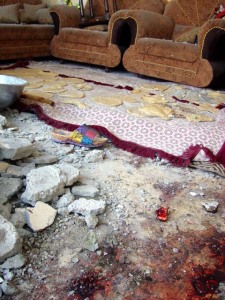


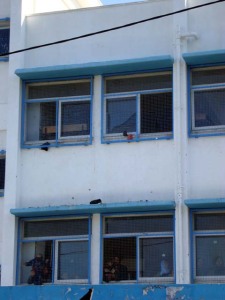
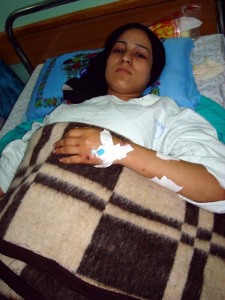
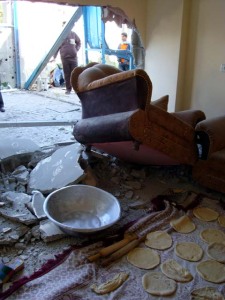
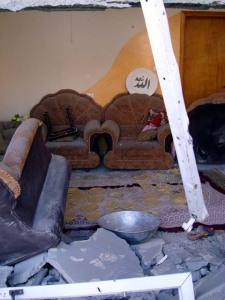
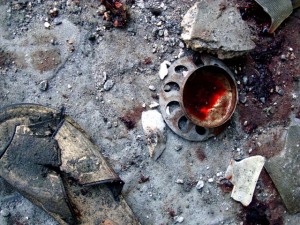
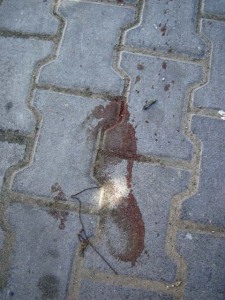
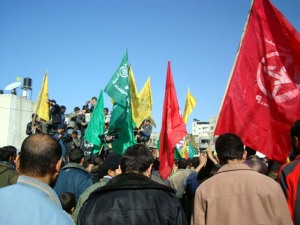
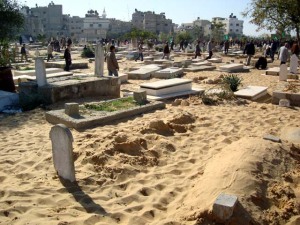

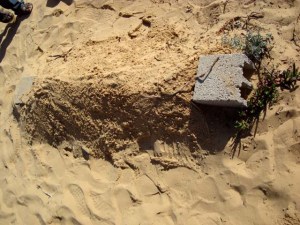

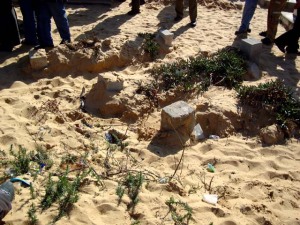
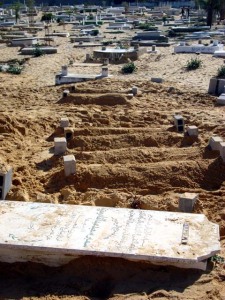


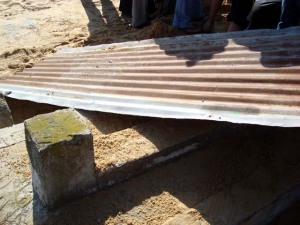
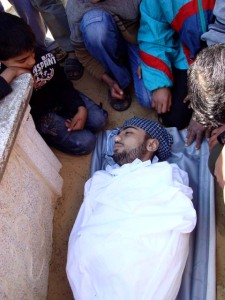
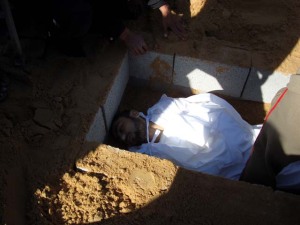
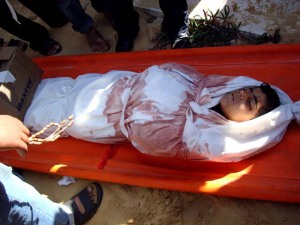
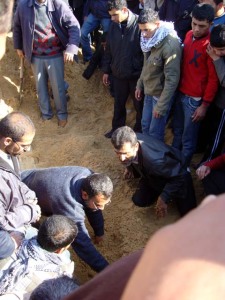
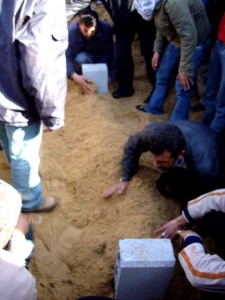
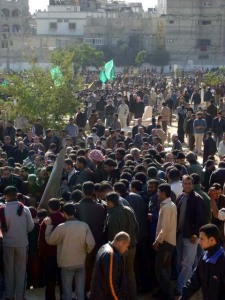
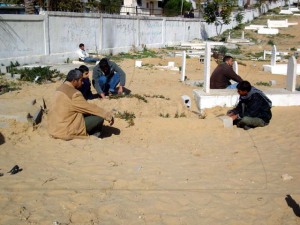
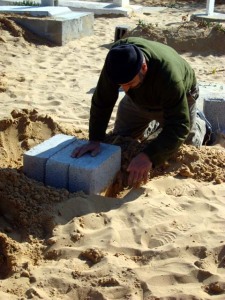
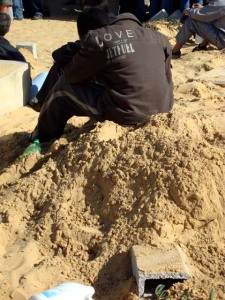
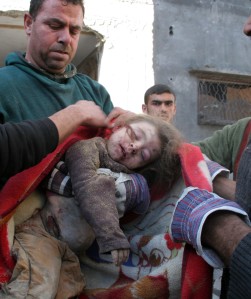
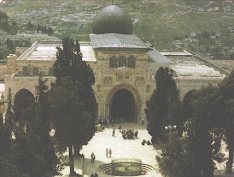








0 التعليقات:
إرسال تعليق